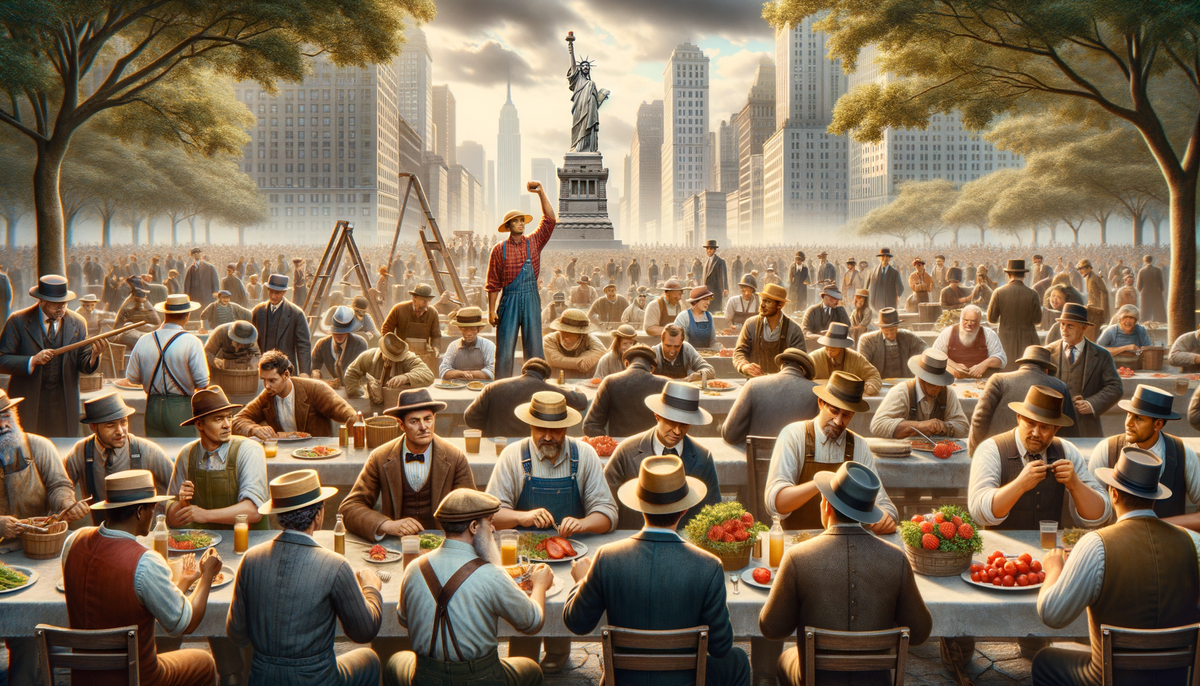Exploring Labor Day: Its Rich History, Transformation, and Modern Significance
Explore the historical roots and evolving significance of Labor Day, a holiday honoring workers' rights and contributions.

Exploring Labor Day: Its Rich History, Transformation, and Modern Significance
Exploring Labor Day: Its Rich History, Transformation, and Modern Significance
Labor Day, a significant federal holiday in the United States, celebrated on the first Monday in September, honors the invaluable contributions of workers to society. It has a profound history, dating back to the late 19th century, and continues to be a pivotal part of American culture, representing both achievements and ongoing challenges in labor rights.
The Historical Origins of Labor Day
The First Labor Day Celebration
The inception of Labor Day can be traced to September 5, 1882, in New York City, where under the auspices of the Knights of Labor, about 10,000 workers made a bold statement by taking unpaid leave to march in a parade showcasing trade unions. This seminal event concluded with festivities including picnics and fireworks, setting a precedent for future celebrations. Notably, the timing was strategic, falling between Independence Day and Thanksgiving, though initially without symbolic attachment to these dates.
Labor Movement Roots
The depth of Labor Day's significance is rooted in the intense labor movement of the late 19th century, spilling into nationwide consciousness through pivotal events like the 1886 Haymarket Riot in Chicago. These rallies and protests were marked by demands for an eight-hour workday, a cause that gained traction especially after the Civil War, decrying the often inhumane working conditions workers were subjected to.
Official Recognition and National Holiday Status
The formalization of Labor Day gained momentum after the original celebration. By 1884, the Knights of Labor were advocating for a recognized holiday on the first Monday of September. Early adopters included Oregon in 1887. Other states quickly followed, embedding the holiday into American culture by 1894, when it was officially recognized at the national level, catalyzed by a backdrop of labor unrest exemplified by the Pullman strike and May Day riots.
Significance, Celebrations, and Modern Relevance
The transformation of Labor Day from its early revolutionary fervor to its present-day status also highlights societal changes. Originally a symbol of workers' struggles and achievements amidst often dire conditions, today it is synonymous with leisurely end-of-summer activities. However, its core purpose - to celebrate the labor force and its rights - remains just as vital.
Actionable Insights for Labor Day Professionals
For professionals in the labor field, Labor Day offers renewed insight into ongoing challenges and successes within labor rights, encouraging active participation in modern labor movements. Recognizing the historical context can provide powerful lessons in advocacy and the importance of maintaining momentum in worker rights advancements.
Learn more about historical Labor Day origins
Why We Celebrate International Workers' Day
Top 5 Places in India Shaping Workers' Rights
Conclusion and Call to Action
As Labor Day approaches, reflecting on its rich tapestry of struggles and triumphs can inspire renewed dedication to upholding and advancing workers' rights. We invite professionals, business leaders, and all stakeholders to delve deeper into the historical and modern significance of Labor Day and engage actively in discussions and actions aimed at improving workplace conditions and labor laws.
For more captivating insights and expert analysis on Labor Day and its implications today, visit us at Newsomix and become part of a community that values knowledge and impacts the world of labor positively.




